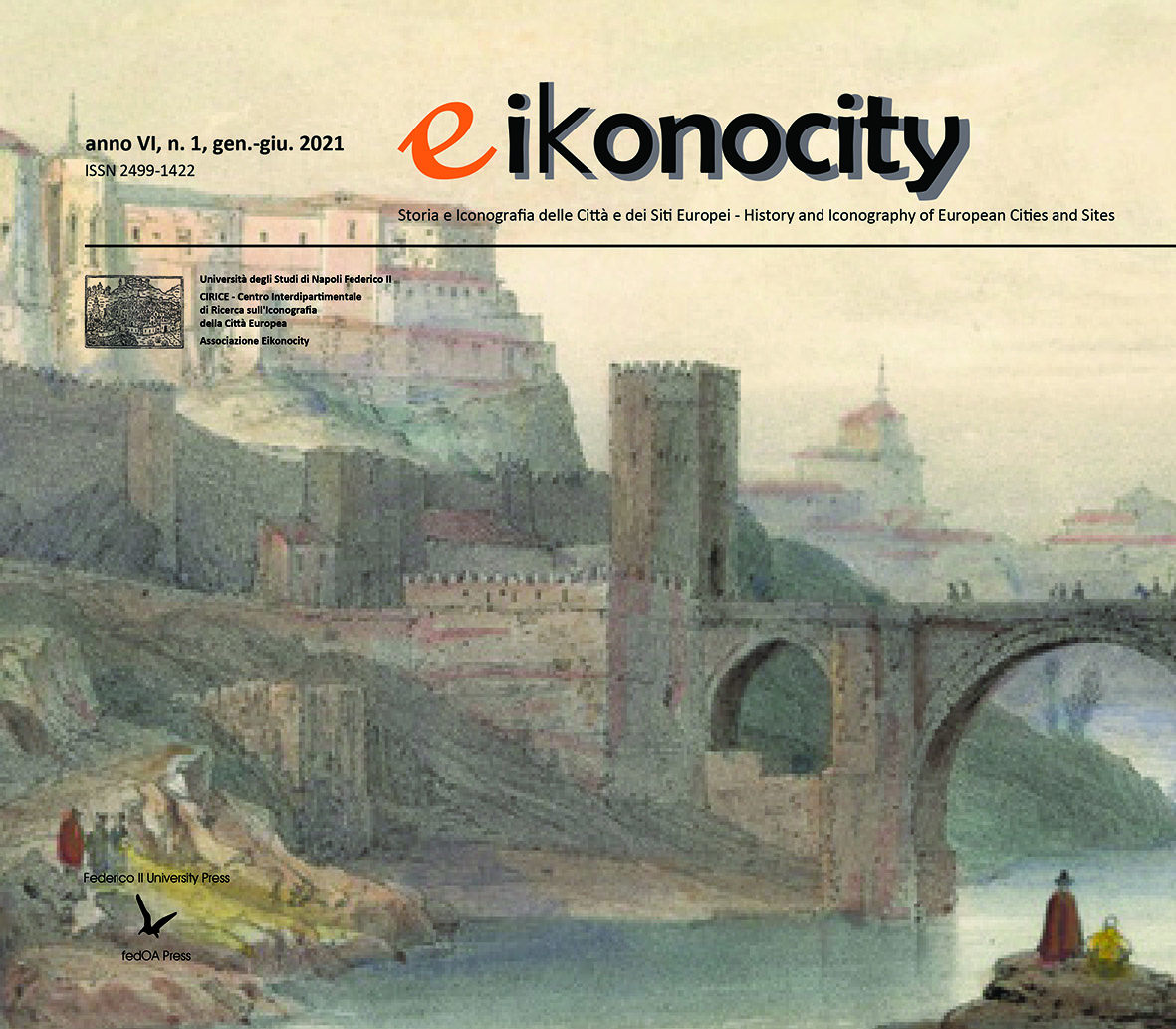Permanenza di un tòpos iconografico, da paesaggio romantico a paesaggio abbandonato: il vallone dei Mulini a Sorrento
DOI:
https://doi.org/10.6093/2499-1422/7914Abstract
The scenic beauty of the ‘Vallone dei Mulini’ of Sorrento has fed the imagination of all of Europe and contributed to the tourist fortune of the city.
Until the Eighteenth century the valleys were defined as the «deep pits», which surrounded and defended the city, but it is from the early Nineteenth century that they began to become a landscape, being included among the attractions of Sorrento by Hackert and Turpin de Crissé.
The contribution aims to analyze the interest that the ‘Vallone dei Mulini’ has aroused in European travelers and the iconographic fortune that derives from it, in views, paintings, engravings, lithographs and photographs, up to being reinterpreted by contemporary artists and personalities from the world of culture, becoming the inspiration for inlays and nativity scenes.
Downloads
Downloads
Published
How to Cite
Issue
Section
License
Eikonocity pubblica in internet, ad accesso aperto, con licenza:
|
|
CCPL Creative Commons Attribuzione 4.0 |
L'autore conserva il copyright sul suo contributo, consentendo tuttavia a chiunque "di riprodurre, distribuire, comunicare al pubblico, esporre in pubblico, rappresentare, eseguire e recitare l'opera", purché siano correttamente citati l'autore e il titolo della rivista. L’autore, al momento della proposta di pubblicazione, è inoltre tenuto a dichiarare che il contenuto e l’organizzazione dell’opera è originale e non compromette in alcun modo i diritti di terzi, né gli obblighi connessi alla salvaguardia di diritti morali ed economici di altri autori o di altri aventi diritto, sia per testi, immagini, foto, tabelle, sia per altre parti di cui il contributo può essere composto. L’autore dichiara altresì di essere a conoscenza delle sanzioni previste dal codice penale e dalle leggi speciali per l’ipotesi di falsità in atti ed uso di atti falsi, e che pertanto Eikonocity è esente da qualsiasi responsabilità di qualsivoglia natura, civile, amministrativa o penale, e sarà dall'autore tenuta indenne da qualsiasi richiesta o rivendicazione da parte di terzi.


